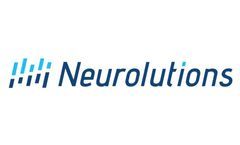Craniotomy Articles & Analysis
6 news found
Brain surgery often involves performing a craniotomy, a procedure by which a portion of the skull is temporarily removed using bone cutting instruments. ...
The Navient system is intended for cranial surgeries (such as craniotomies, cranial biopsies, tumor resections…) as well as ENT procedures (all trans-nasal cases such as transsphenoidal procedures, ethmoidectomies, frontal sinusotomies…). ...
ByClaroNav
The IpsiHand System device should not be used by patients with severe spasticity or rigid contractures in the wrist and/or fingers that would prevent the electronic hand brace from being properly fit or positioned for use or those with skull defects due to craniotomy or craniectomy. The IpsiHand System device was granted Breakthrough Device designation, which is a process ...
The SPEAC System may also be used for continued outpatient monitoring where the diagnostic data may be helpful to help prioritize high value epilepsy surgery candidates, to evaluate post-craniotomy patients to ensure seizure freedom, and to foster prompt post-discharge follow-up, enabling the physician to identify potential problems that could lead to readmission or other ...
Absorbable hemostats are often used 4 – 7 times in craniotomy procedures. Hemostats currently used in most brain surgeries are slow acting, rated as being effective in 10 minutes for each use in a procedure. ...
” PDR recently collaborated with the Teknon Medical Center in Barcelona to help design a patient specific implant for a cranioplasty and a custom surgical cutting guide for a craniotomy. The parts were manufactured on a Renishaw AM250 metal 3D printing system in titanium with a satin finish. ...






